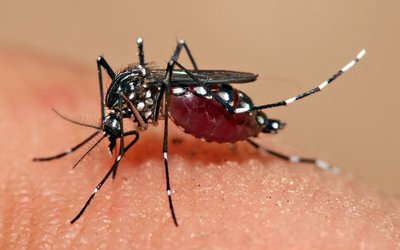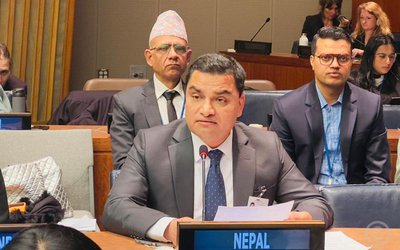This year on April 7, the World Health Day, the World Health Organization( WHO) highlighted the prevention of vector-borne diseases. Vectors are generally insect carriers that transmit the disease-causing“bug” to humans. The best know vector is the mosquito which transmits the malaria parasite.
In keeping with the aspirations of the WHO on the World Health Day, now that summer ishere it may be useful to look at what our unfriendly mosquitoes are up to, especially in spreading dengue fever.Dengue feveremerged from Africa during the slave trade in the 15th through 19th centuries. It spread into Asia through commercial exchanges in the 18th and 19th centuries. The global presence of dengue is now clear with the advent of increased travel and trade in the past 50 years.
In recent years in theTeraidenguehas beenfound in the summer in large numbers. Even in Kathmandu dengue has been seen in the occasional patient.
This spread is not surprising because of two reasons: a migrant population with the disease and the abundant supply of the particular vector (carrier) mosquitoes. Because of the porous border with India, many migrant labourers( both Nepalis and Indians) with the disease enter Nepal. The vector mosquito enjoys a blood meal from these infected patients and transmits the disease to a healthy person after a bite.
Importantly, different species of mosquitoes transmit different diseases. So, the mosquito that transmits malaria will not transmit dengue. Mosquitoes that transmit dengue are called aedes versus the femaleanopheles that transmits malaria.The other important vector ( culex mosquito) transmits Japanese encephalitis ( JE).
The diagnosis of dengue should be strongly considered in any patient presenting with fever that has developed within 14 days of even a brief trip to dengue- endemicplaces like Bangkok and Delhi. The dengue mosquito is generally a city dweller unlike the malaria mosquito which prefers a rural environment.
In mostpeople, dengue illness, which comprises of fever headache, eye pain and joint aches, subsides in about a week’s time. Doctors will treat only the symptoms in dengue as there is no specific antidote.
For prevention, use mosquito repellents like (odomas or DEET) and wear full length clothing even in the day time as the dengue mosquito is a day time mosquito unlike the malaria mosquito which is active at night. In addition turn overwatering cans and pails after use so that the dengue mosquito does not breed in them.
As with many viral illnesses, it is hard to predict how severely the Nepali population will be affected this summer. However,it is clearly a good idea to take precautions and avoid mosquito bites.
Although typhoid fever, commonly seen in Nepal, is not a vector- born disease as it is transmitted by eating or drinking contaminated food or water, typhus ( which almost sounds like typhoid and has lead to confusion) is clearly a vector- borne disease. Definitive studies done at Patan Hospital have clearly established that murine typhus fever is a very common cause of fever in Nepal.
Murine ( which actually denotes rodents or rats) typhus organism ( called rikcettsiae) is carried by fleas on rats. These fleas( vectors) transmit the disease to humans when the flea faecal material contaminate the area where the flea bite takes place. So even the vector ( flea) is being carried by another animal ( the rat) before it finally reaches the human.
Clearly these diseases like murine typhus abound in places where housing is poor and the environment is contaminated. Hence the disease exacts its heaviest toll where the poor live. “The control of vector-borne diseases can make a major contribution to poverty reduction, as it precisely targets the poor” said Margaret Chan, the Head of WHO, on the occasion of the World Health Day.

Buddha Basnyat MD
Buddha Basnyat, MD, MSc, FACP, FRCP, Director of the Oxford University Clinical Research Unit-Patan Academy of Health Sciences, Kathmandu.
- Altitude Sickness
- Feb 20, 2018
- Post-earthquake Nepal: The Way Forward
- Dec 13, 2015
- The Annapurna Sanctuary
- Nov 29, 2015
- Diarrhea at the Summit
- Nov 08, 2015
- Altitude Sickness ( AMS, HAPE, HACE)
- Oct 15, 2015














